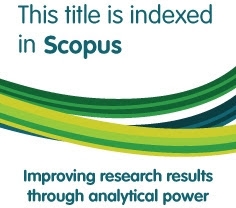Dawr al-mar’ah fī usrat al-salafīyah al-jihādīyah fī farḍ al-inḍibāṭ ‘alá jism al-abnā’
Abstract
In a radical group, women have strategic and significant roles as a martyr, creating some kindship genealogies, recruiting members, and reproducing religious values for their family members. This paper intends to study more deeply about women’s role in reproducing religious values in the Salafi Jihadi’s family, specifically in the terrorism convicted family. When their husbands are jailed because of terrorism cases, the terrorists’ wives will become the family’s center. Besides as a mother, they also must replace their husband’s role such as giving livelihood and reproducing religious values for their children. In this study, reproduction of religious values in the Sisi and Susi’s family (unreal names) is implemented through child’s body disciplines. It undertakes through some activities such as (1) space concept (2) activity and behavior (3) punishment.
Keywords
Full Text:
PDFReferences
Abas, Paridah. 2005. Orang Bilang, Ayah Teroris. Solo: Jazera.
Abuza, Zachary. 2003. Militant Islam in Southeast Asia: Crucible of Terror. Boulder: Lynne Rienner Publishers.
———. 2006. Political Islam and Violence in Indonesia. London: Routledge.
Affianty, Debbie. 2016. “Perempuan dalam Kelompok Jihadis dan Terorisme.” In Reformulasi Ajaran Islam, Jihad, Khilafah Terorisme, Bandung: Mizan.
Bloom, Mia. 2009. Dying to Kill: The Allure of Suicide Terror. New York: Columbia University Press.
Foucault, Michel. 1995. Discipline and Punish: The Birth of the Prison. New York: Vintage Books.
Gunawan, Roland, and Lies Marcoes-Natsir, eds. 2017. Inspirasi Jihad Kaum Jihadis (Telaah Atas Kitab-Kitab Jihad). Jakarta: Yayasan Rumah Kitab.
Hamilton-Hart, Natasha. 2005. “Terrorism in Southeast Asia: Expert Analysis, Myopia and Fantasy.” The Pacific Review 18(3): 303–25.
International Crisis Group. 2002. “Indonesia Backgrounder: How the Jemaah Islamiyah Terrorist Network Operates.” Crisis Group. https://www.crisisgroup.org/asia/south-east-asia/indonesia/indonesia-backgrounder-how-jemaah-islamiyah-terrorist-network-operates (March 31, 2019).
———. 2003. “Jemaah Islamiyah in South East Asia: Damaged but Still Dangerous.” Crisis Group. https://www.crisisgroup.org/asia/south-east-asia/indonesia/jemaah-islamiyah-south-east-asia-damaged-still-dangerous (March 31, 2019).
———. 2008. The Philippines: Counter-Insurgency Vs. Counter-Terrorism in Mindanao. Crisis Group.
Ismail, Noor Huda. 2007. “The Role of Kindship in Indonesia’s Jemaah Islamiyah.” Terrorism Monitor 4(11): 303–25.
Jayanti, Deti Anisa, and Endang Sri Indrawati. 2013. “Subjective Experience to Be Wife of Convicted Terrorism.” Empati 2(4): 115–26.
Jongman, Berto. 2007. “Research Desiderata in the Field of Terrorism.” In Mapping Terrorism Research: State of the Art, Gaps and Future Direction, New York: Routledge.
Knop, Katharina Von. 2007. “The Female Jihad: Al Qaeda’s Women.” Studies in Conflict & Terrorism 30(5): 397–414.
Lutz, James M., and Brenda J. Lutz. 2008. Global Terrorism. New York: Routledge.
Maghfur and Siti Mumun Muniroh. 2013. “Women Behind Terrorists (Religiousity, Self Adaptation and Husband-Wife Relationship Within Suspected Terrorists Family in Pekalongan).” Analisa Journal of Social Science and Religion 20(2): 181–95.
Marcoes-Natsir, Lies, and Lanny Octavia. 2014. Kesaksian Para Pengabdi: Kajian tentang Perempuan dan Fundamentalisme di Indonesia. Jakarta: Rumah Kitab.
Noor, Haula. 2009. “Pride Within Stigma: The Case of Indonesian Terrorists’ Famili.” UIN Syarif Hidayatullah Jakarta.
Nuraniyah, Nava. 2017. Suara yang Terabaikan: Perspektif Gender dalam Studi-Studi tentang Kekerasan Teroris di Indonesia dalam Kebebasan, Toleransi dan Terorisme Riset dan Kebijakan Agama di Indonesia. Jakarta: Pusat Studi Agama dan Demokrasi.
Pape, Robert. 2005. Dying to Win: The Strategic Logic of Suicide Terrorism. New York: Random House Publishing Group.
Saputro, M. Endy. 2012. “Probabilitas Teroris Perempuan di Indonesia.” Jurnal Ilmu Sosial dan Ilmu Politik 14(2): 211–28.
Sidel, John Thayer. 2006. Riots, Pogroms, Jihad: Religious Violence in Indonesia. New York: Cornell University Press.
Singh, Bilveer. 2007. The Talibanization of Southeast Asia: Losing the War on Terror to Islamist Extremists. London: Greenwood Publishing Group.
Speckhard, Anne, and Khapta Akhmedova. 2005. “Black Widows and Beyond Understanding the Motivations and Life Trajectories of Chechen Female Terrorists.” In Female Terrorism and Militancy: Agency, Utility and Organization, London & New York: Routledge.
Zahra, Fatimah. 2017. Diary Jihad dan Cinta Perjalanan Cinta Seorang Istri dan Ibu Mujahid. Yogyakarta: Pro-U Media.
DOI: https://doi.org/10.15408/sdi.v26i1.6836
Refbacks
- There are currently no refbacks.

All publication by Studia Islamika are licensed under a Creative Commons Attribution-NonCommercial 4.0 International License.
Studia Islamika, ISSN: 0215-0492, e-ISSN: 2355-6145
View My Stats
